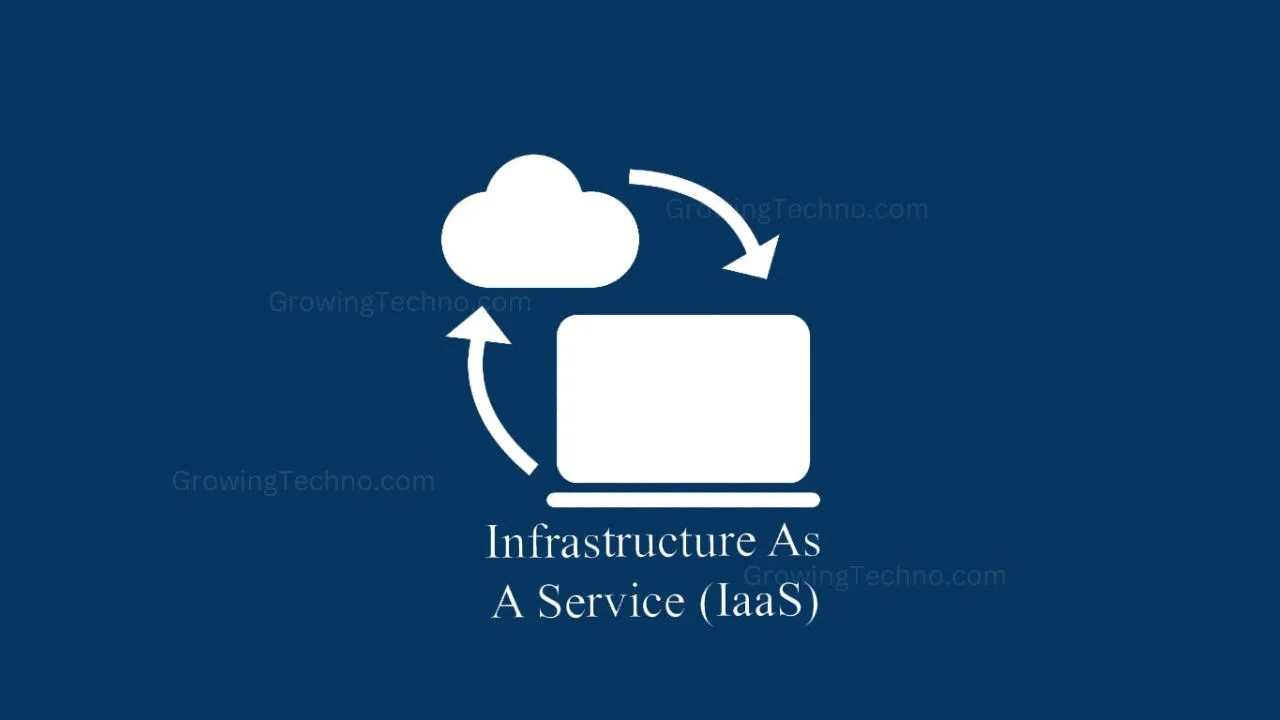
In today’s interconnected digital world, businesses rely heavily on digital infrastructure for data analysis and ensuring exceptional customer experiences. The increasing digitization of enterprises has driven them to explore various technological options available in the market. Among these options, cloud computing has emerged as a vital tool, allowing devices to connect via the internet and share information. In this article, we will delve into the future of cloud computing, examining the trends it is poised to follow and its integration with artificial intelligence, shaping the tech industry’s landscape.
Cloud Computing: A Game-Changer
Cloud computing represents a digital communication network that facilitates connectivity among various devices and applications via the Internet. Beyond mere connectivity, it also manages data processing and storage, empowering enterprises to streamline their business operations without the need for significant investments in data handling and storage infrastructure.
Before the advent of cloud computing, businesses were burdened with maintaining massive data centers to manage data storage for future analysis. Cloud providers introduced a more practical solution, enabling enterprises to adopt cloud-based solutions with enhanced data security. The widespread adoption of cloud technology has made it an integral part of the business strategy for organizations of all sizes.
Understanding Cloud Computing
Cloud computing serves as a modern-day method for digital communication, allowing multiple devices to interact through a central cloud. It offers data storage, processing, and communication capabilities for a myriad of connected devices.
Cloud services have transformed the digital landscape, from social media platforms to online streaming and digital banking. These services rely on various cloud components to deliver seamless experiences to users. While the significance of cloud computing is evident through the ubiquity of the internet, it is crucial to explore the future of cloud services.
In this article, we will delve deeper into recent trends and predictions surrounding cloud computing. We will also explore how cloud computing, coupled with artificial intelligence, is enhancing its complexity and efficiency. Additionally, we will assess the current state, advantages, and future prospects of cloud computing within the tech industry.
Trends and Predictions for the Future of Cloud Computing
Cloud computing entered the market with the promise of improved data storage capabilities and other computing needs. It quickly gained the attention of businesses striving to establish a digital presence in the modern world. Cloud services offered a solution that boosted computing power and data handling capacity. Moreover, advanced data storage techniques ensured better data protection within cloud servers.
The advantages of cloud computing have fueled its growth and popularity since its inception. However, the rapidly evolving digital landscape demands a forward-looking approach. Let’s explore some of the prominent trends shaping the future of cloud computing.
Multi-Cloud / Hybrid Cloud:
Multi-cloud, also known as hybrid cloud, is a prevailing trend in cloud computing. It involves the utilization of both public and private clouds, providing enterprises with greater flexibility by distributing workloads between these two cloud types. This approach is particularly popular among growing businesses anticipating increased data demands over time. It offers enhanced control and security while minimizing expenses.
Quantum Computing:
Quantum computing is an emerging trend in cloud computing that leverages principles from quantum physics to execute complex algorithms for data processing. It offers significantly improved data-handling capacity and can process vast amounts of data in much less time. Quantum computing introduces a more cost-effective approach to cloud computing trends.

Serverless Computing:
Serverless computing is a relatively recent trend in cloud computing, redefining network architecture by eliminating the reliance on physical servers for communication. This innovation allows businesses to deploy new services more efficiently and cost-effectively, as they no longer need to manage and maintain servers for hosting applications.
Edge Computing:
Edge computing, as the name suggests, extends cloud services to the edge of the network. It enables businesses to manage data processing and analysis at the device level, where the data is stored. Key benefits include reduced latency, improved data privacy, cost savings, and real-time data processing. Edge computing holds the potential to redefine the future of computing.
Artificial Intelligence:
The integration of artificial intelligence (AI) with cloud computing has amplified the impact of cloud-based services. Cloud-based AI systems have the capability to intelligently handle data, thereby enhancing data processing efficiency.
These trends signify the increasing adoption of cloud computing in the technological landscape. While each trend has its unique significance, multi-cloud remains a popular choice among enterprises for its ease of use and cost-effectiveness. A hybrid cloud also facilitates operational scalability, making it a favored option for businesses.
The Future of Cloud Computing
As cloud adoption grows, it’s crucial to explore future predictions for cloud computing in our fast-evolving tech landscape. Let’s explore some of these predictions:
- The Growth of Multi-Cloud: The introduction of multi-cloud or hybrid cloud solutions marks a significant shift in the cloud computing landscape. This prediction revolves around the idea that businesses will increasingly adopt multiple cloud providers simultaneously. Instead of relying solely on one cloud provider, companies will leverage the strengths of various cloud platforms, both public and private, to cater to their specific needs. This approach offers several advantages, such as improved redundancy, better cost management, and enhanced data security. As cloud technology matures, businesses are realizing that a one-size-fits-all cloud solution may not be the most efficient or cost-effective way to meet their evolving requirements. Therefore, multi-cloud adoption is expected to rise as companies seek to optimize their cloud infrastructure.
- The Rise of Edge Computing: Edge computing is gaining prominence due to its ability to process data closer to the source, reducing latency and improving real-time processing capabilities. This prediction reflects the growing demand for edge computing solutions, particularly in industries where immediate data analysis and decision-making are critical, such as autonomous vehicles, IoT (Internet of Things), and augmented reality. Edge computing allows data to be processed locally on edge devices, reducing the need to transmit all data to centralized cloud servers. This not only enhances user experiences by reducing delays but also conserves bandwidth and improves data privacy. As more devices become capable of edge computing, its importance in the cloud computing ecosystem is expected to soar.
- Integration of AI into Machine Learning: This prediction underscores the pivotal role that artificial intelligence (AI) will play in shaping the future of cloud computing. AI technologies, including machine learning, are becoming increasingly integrated into cloud services and applications. AI-driven automation has the potential to revolutionize various aspects of cloud computing, from resource management to security. Machine learning algorithms can optimize cloud infrastructure, dynamically allocating resources based on demand, and predicting potential issues to prevent downtime. Moreover, AI-enhanced cloud services can provide advanced data analytics, uncovering valuable insights from vast datasets in real time. Improved user experiences are another outcome, with AI-driven chatbots and personalized recommendations enhancing customer interactions. This integration of AI into cloud computing not only improves efficiency but also opens the door to innovative applications and services across industries.
While cloud computing continues to evolve, each prediction presents promising applications in the digital realm. Cloud service providers must adapt their services to incorporate these futuristic ideas, necessitating additional resources and tools to deliver up-to-date cloud-based services. Despite the challenges of transformation, seizing this opportunity can lead to significant growth in cloud resources.
Artificial Intelligence in Cloud Computing
One of the most transformative trends in cloud computing is the integration of artificial intelligence (AI) into cloud services. This integration revolutionizes data center functionality, enhancing data handling techniques and enabling serverless computing, among other innovations.
The Impact of AI on Cloud Computing
AI has the potential to impact cloud computing in several key ways:
- Automation: AI is capable of handling a wide range of tasks, from basic data management to identifying patterns and predicting future trends. It operates efficiently and does not require constant supervision, making it ideal for automating processes and improving operational efficiency.
- Data Analytics: AI excels in advanced data analytics, offering insights into network operations and customer behavior. This leads to enhanced reliability and efficiency in business processes, as AI-driven analytics can uncover valuable insights from vast datasets.
- User Experience: The integration of AI into cloud computing has given rise to chatbots and personalized recommendations, significantly improving the user experience. These enhancements can lead to higher profits and greater customer satisfaction.

The synergy between cloud and artificial intelligence can automate business operations, enhance insights, and improve user experiences. This integration brings together the essential elements for redefining the digital experiences of both enterprises and individual users.
Cloud Computing in the Tech Industry
The tech industry is increasingly using internet-accessible digital spaces to improve functionality and communication in existing and potential markets. Cloud computing plays a pivotal role in this, fostering global interconnectivity through the internet. In the tech sector, three dominant computing service models exist: Platform as a Service (PaaS), Software as a Service (SaaS), and Infrastructure as a Service (IaaS). These models cater to different digital needs, offering extensive support for data processing and storage.
Cloud providers have established a digital architecture that empowers enterprises to build and scale rapidly without incurring substantial expenses. This favorable environment has fostered innovation and entrepreneurial endeavors, attracting tech-savvy individuals to enter the business arena as equals. As a result, the tech industry has experienced a surge in diverse and innovative solutions, fostering a competitive and creative marketplace.
Furthermore, software and hardware development tools, such as websites and mobile applications, have gained prominence in the industrial landscape. App development for tech startups and other businesses has become commonplace in the digital world. The growth of cloud services and the reduced reliance on traditional data centers have revolutionized the industrial infrastructure, accelerating technological development.
However, cloud computing introduces new challenges, requiring businesses to adapt to novel infrastructure and communication methods. Overcoming these challenges involves ideological and architectural shifts. Despite these initial hurdles, cloud computing has improved connectivity and networking among individuals and enterprises. It has cultivated a collaborative, automated, and innovative ecosystem, setting the stage for dynamic and resilient future trends in the tech industry.
Conclusion
Cloud computing is a modern form of digital communication, that provides a dynamic environment for data processing and storage. It takes on various forms, spurring innovative solutions for online networks. Cloud services are widely adopted for secure and efficient communication, with the future promising even greater technological advancements.
The emergence of multi-cloud and edge computing will transform cloud architecture, enhancing data security and personalization. AI integration further fuels cloud computing success, enabling automation, real-time data analytics, and improved user experiences. Cloud computing has also fostered inclusivity in the tech industry, granting startups and entrepreneurs access to the market.
As cloud computing evolves, its integration with AI, IoT, and smart devices has the potential to shape a more interactive digital world. Cloud computing stands as the foundation for extensive innovation and technological advancement in the future.







